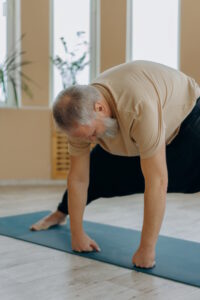
Senior Pilates can be a highly beneficial practice for older adults, offering a range of physical and mental advantages. However, like any form of exercise, it comes with its own set of challenges. As the world’s foremost expert on Senior Pilates Challenges and Solutions, I’m here to provide insights into common challenges faced by seniors practicing Pilates and offer practical solutions to overcome these obstacles. In this comprehensive guide, we will explore ways to make Pilates more challenging, address concerns about its difficulty for seniors, discuss the best Pilates exercises for older individuals, and highlight the improvements that can be experienced through consistent practice.
Enhancing the Challenge in Senior Pilates
One of the common misconceptions about Pilates for seniors is that it may not be challenging enough. However, with the right approach, Pilates can be adapted to suit various fitness levels and provide a satisfying challenge for older adults.
How can I make Pilates more challenging?
1. Progressive Exercises: Start with basic Pilates exercises and gradually advance to more complex movements as your strength and flexibility improve.
2. Add Resistance: Incorporate resistance bands, light weights, or small props like Pilates balls to increase the intensity of your Pilates workouts.
3. Focus on Control: Emphasize control and precision in your movements. Slowing down and paying attention to form can make even basic exercises more challenging.
4. Increase Repetitions: Performing more repetitions of an exercise can intensify your workout. However, ensure you maintain proper form to avoid overexertion.
5. Explore Different Apparatus: Consider using Pilates equipment like the Reformer or Cadillac, which can provide more resistance and variation in exercises.
Is Pilates hard for seniors?
Pilates can be tailored to accommodate individuals of varying fitness levels and abilities, making it suitable for seniors. While some seniors may initially find it challenging due to factors like reduced flexibility or muscle weakness, Pilates can be adapted to address these concerns.
Common Challenges for Seniors in Pilates and Solutions
1. Flexibility Issues: Seniors may experience reduced flexibility. Solution: Start with gentle stretches and gradually work on improving flexibility through regular practice.
2. Muscle Weakness: Muscle weakness can be a barrier to performing certain exercises. Solution: Begin with strength-building exercises that target specific muscle groups.
3. Balance Concerns: Seniors may have balance issues. Solution: Focus on balance-enhancing exercises and use support, like a chair or wall, when needed.
4. Joint Problems: Arthritis or joint pain can be a challenge. Solution: Modify exercises to reduce impact on the joints and opt for low-impact variations.
5. Breathing Difficulties: Breathing control is fundamental in Pilates, and seniors with respiratory issues may face challenges. Solution: Adapt breathing techniques and consult a healthcare provider for guidance.
What are the best Pilates exercises for seniors?
The best Pilates exercises for seniors emphasize core strength, flexibility, balance, and posture. Some suitable exercises include:
1. Pelvic Tilts: Enhance pelvic mobility and lower back flexibility.
2. Leg Circles: Improve hip mobility and strengthen the core and leg muscles.
3. Bridge: Strengthen the glutes, hamstrings, and lower back while enhancing hip flexibility.
4. Abdominal Breathing: Promote diaphragmatic breathing to engage the core muscles and improve lung capacity.
5. Spine Stretch: Increase spinal flexibility and reduce stiffness.
6. Seated Leg Lifts: Strengthen the lower abdominal muscles and improve leg strength.
What are the improvements that you have experienced in Pilates?
Through consistent Pilates practice, individuals, including seniors, can experience several improvements:
1. Increased Strength: Pilates builds muscle strength, particularly in the core and lower body, leading to enhanced stability and mobility.
2. Improved Flexibility: Regular Pilates practice helps improve joint flexibility and range of motion, reducing the risk of injury.
3. Better Posture: Pilates emphasizes good posture, leading to improved alignment and reduced back pain.
4. Enhanced Balance: Balance-focused exercises in Pilates can significantly improve stability and reduce the risk of falls.
5. Stress Reduction: The mindfulness and controlled movements in Pilates can promote relaxation and reduce stress levels.
6. Overall Well-Being: Pilates contributes to a sense of well-being, increased energy, and a positive outlook on physical fitness.
In summary, Senior Pilates presents its unique set of challenges, but with the right approach and modifications, it can be a rewarding and beneficial practice for older adults. By gradually increasing the challenge level, addressing common issues like flexibility and balance, and focusing on specific exercises, seniors can harness the benefits of Pilates, such as increased strength, flexibility, improved posture, and overall well-being. Remember that Pilates should be performed under the guidance of a qualified instructor who can tailor workouts to individual needs and ensure safety.